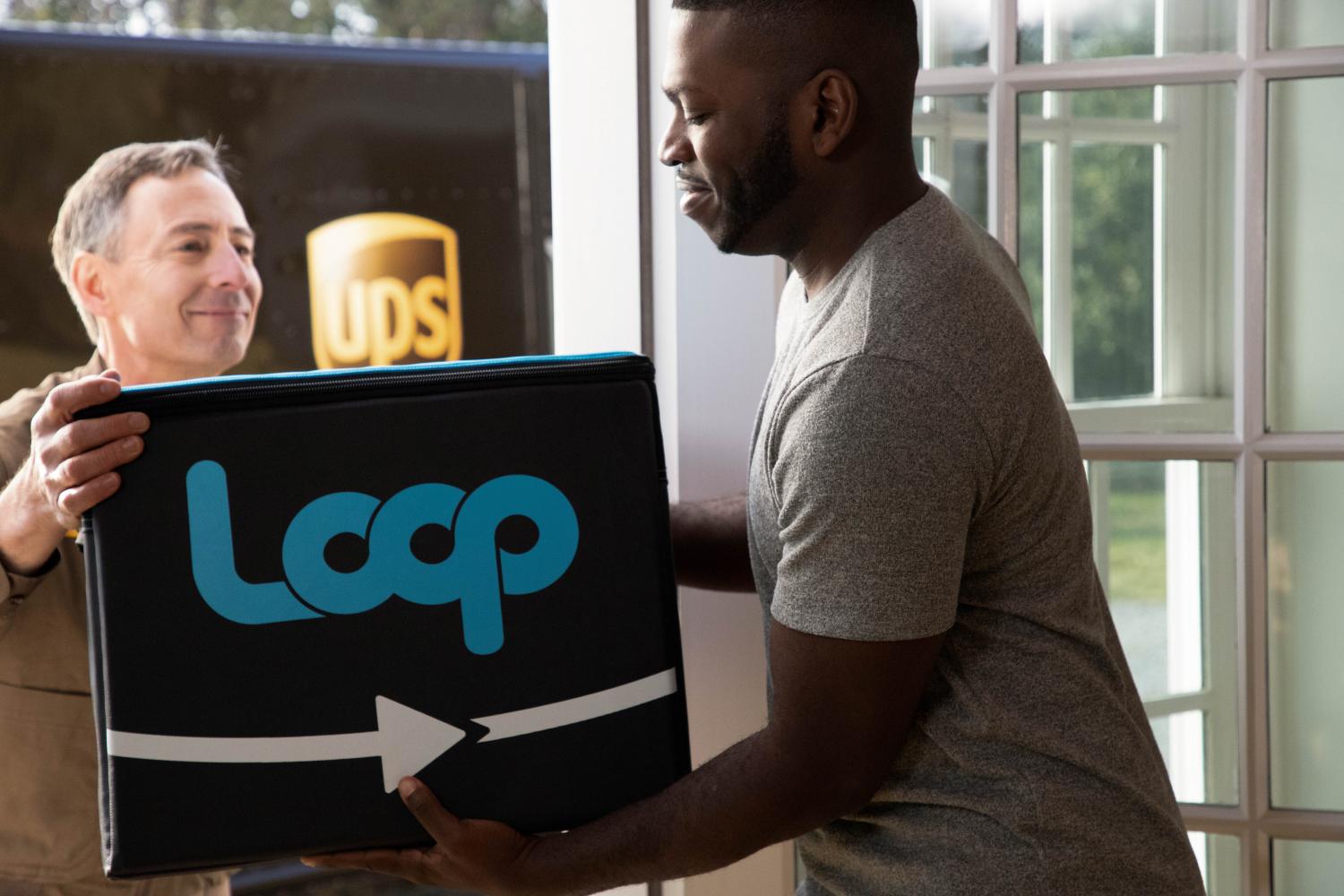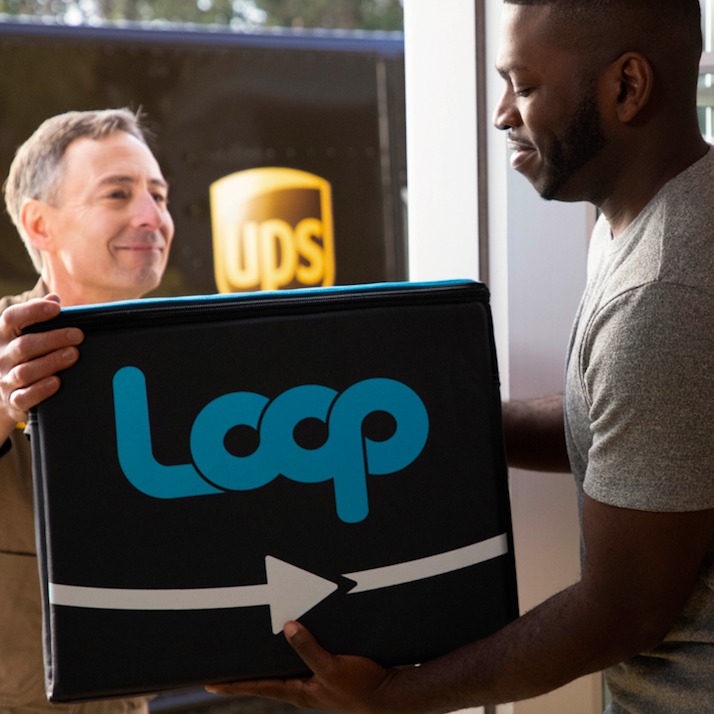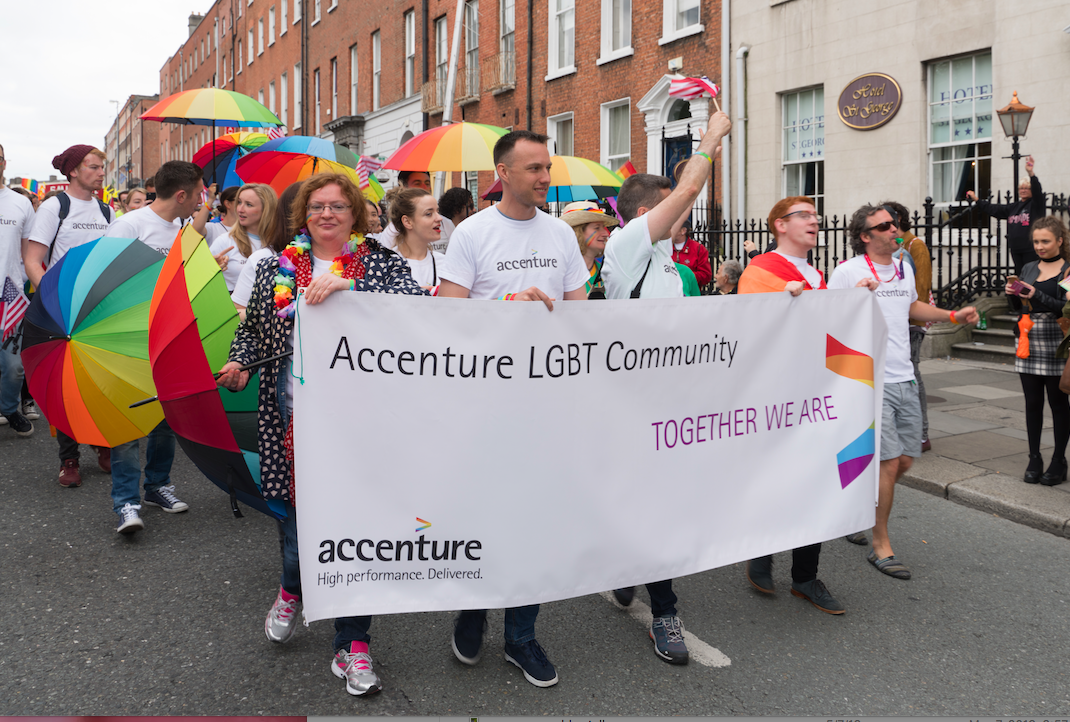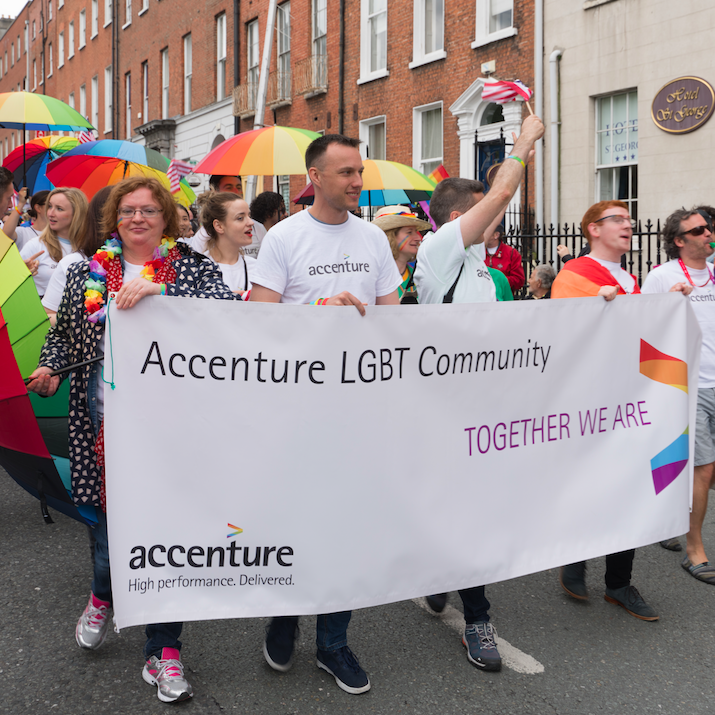Dell Seizes Circular Economy Opportunities Such As ‘Pollution Ink’


Dell is working on many circular economy projects, including “pollution ink,” made from diesel generator soot - and then used on the packaging in India.
Editor's Note: This story is part of an editorial series featuring companies on CR Magazine's 20th annual 100 Best Corporate Citizens ranking, which recognizes outstanding environmental, social, and governance (ESG) disclosure and performance among the Russell 1,000 Index. You can follow the series here.
The circular economy is maturing, and companies no longer have to reinvent the wheel to take on every new supply chain challenge. They can close the loop by tapping into a rich pool of experienced partners in the business and nonprofit communities.
That strategy has paid off for Dell Technologies. Last month, the company announced that it is ahead of schedule on two key commitments for recycling electronics and using recycled materials. Dell has also introduced several innovative new loop-closing measures with the help of expert partners.
The importance of raised expectations
David Lear, vice president of corporate sustainability at Dell Technologies, draws a close connection between a company’s bottom-line interests and the competitive forces that drive the circular economy. As much as Dell presses its supply chain for improvements, many of the company’s clients and prospective clients are also setting a high bar.
“We are seeing financial benefits from our closed-loop plastics—saving us $2.1 million since the launch in 2014—with more than 70 percent of our customer RFPs asking about Dell Technologies’ responsible business practices,” Lear explains.
Supply chain issues are becoming more important than ever. Leading companies like Dell are moving beyond conventional reporting indexes designed for business. They are also seeking global impact by assimilating the 2015 U.N. Sustainable Development Goals (SDGs), which were created as guideposts for national policy makers.
Partnering for visibility
In the circular economy, recycling is more than just a feel-good message. It is a bottom-line matter of supply chain reliability and resilience. Companies that seek to stand out in the circular economy face a critical obstacle: how to cut through the clutter and get the recycling message out.
To stand out, Dell has gone beyond website content and social media to engage with partners who stand out, too. For example, in 2018, Dell partnered with actress, entrepreneur and activist Nikki Reed to launch the Circular Collection by Bayou with Love, a jewelry collection sourced with gold recovered gold from Dell’s recycling programs.
Dell also sponsored the 2019 Circular Economy People’s Choice Award for the World Economic Forum, featuring “impact drivers” including sustainable tableware, clothing recycling, waste reduction and rainwater harvesting.
The company Triciclos, headquartered in Brazil and Chile, ultimately won top honors for a scalable waste management and recovery model. In addition, this year Dell was also the official technology sponsor and sustainability partner for the 2019 Sundance Film Festival.
Partnering for innovation
Dell also stands out from the crowd by integrating a partner-based strategy into its supply chain. “Much of our inspiration stems from partnership across organizations,” Lear says. “No one organization can deliver such ambitious goals, and we owe our achievement to multiple stakeholders.”
Lear cites one standout example, a partnership with Chakr Innovation for “pollution ink” used on Dell packaging in India. The ink is made from soot captured from diesel generators. The soot capture system also doubles as an air purifier. According to Chakra, it cleans the equivalent of air breathed by 110,000 people.
Other examples include a new partnership with Seagate and Teleplan for recovering rare earth magnets from the Dell Latitude 5000 series, and participation in the NextWave consortium organized by Lonely Whale for ocean plastic and “ghost” fishing gear. (Lonely Whale is also involved with Bacardi for ocean plastic and the sports and entertainment company AEG.)
Dell’s “EcoLoop” initiative has also given rise to innovations like a coating made from used auto glass, and an energy efficient dying process that generates up to 90 percent less wastewater, while also reducing CO2 emissions.
Nudging government policy in the circular direction
NextWave is also supported by U.N. Environment, and that underscores another aspect of Dell’s strategy: engagement with global initiatives of the United Nations and its affiliated organizations.
Not too long ago, that kind of relationship could create a public relations nightmare for high-profile companies. For example, in the U.S., right-wing pundits and Republican leadership worked to gin up public opposition to the U.N.'s Agenda 21 sustainability initiative as part of an effort to undermine the Barack Obama administration.
Today, the Green New Deal proposal is undergoing similar pushback. However, if the past is any indication, leading businesses may soon assimilate the proposal—or at least, key parts of it. In fact, they already are. The Green New Deal proposal is essentially a restatement of the SDGs and of fundamental principles of corporate social responsibility.
While comparisons to the original New Deal of the 1930s are obvious, political observers also point out that the more recent American Recovery and Reinvestment Act of 2009 also integrated environmental elements with job creation and economic stimulation.
Leading U.S. businesses have already staked out a vanguard position in today’s renewable energy revolution, and they are advocating for decarbonization on an economic development basis. As the circular economy grows, look for the business community to push for policies that favor closing the rest of the loop, too.
Image credit: Dell
Energy Efficiency Unsung Hero Behind U.K. Renewables Surge


Businesses seeking to improve their sustainability profile can gain new opportunities by boosting energy efficiency as well as shifting to renewables.
The latest record-setting developments for wind and solar power tend to grab most of the headlines in the renewable energy revolution. Nevertheless, energy efficiency is an equally important trend. Businesses that seek to improve their sustainability profiles can gain new opportunities by reducing energy use as well as shifting to renewables.
Good news from across the pond
The United Kingdom provides a good example of the hidden role of energy efficiency. Earlier this week, news broke of a new solar power milestone in the U.K. Business Green provided a representative sample of reporting on that topic under the somewhat breathless headline, “High sun: Solar soars to new generation peak.” As reporter Toby Hill explained:
“Bright and clear conditions helped solar break its all-time generation record in the U.K. on Monday, hitting 9.47 gigawatts at noon as it surpassed a previous peak of 9.38 GW set in May 2017.”
As Business Green reported, solar alone accounted for more than 25 percent of the total energy needs in the U.K. last Monday, May 13.
Energy efficiency: The hidden hero
That is a pretty impressive milestone for solar, considering that the U.K. solar industry was virtually non-existent just 10 years ago. In addition, the population and economy of the U.K. were both smaller 10 years ago; the country's population reached 66 million in 2017 and is expected to grow another 7 million by 2041.
On the down side, U.K. planners—and solar critics—are becoming concerned about the large and growing swaths of land that will be needed to keep increasing solar’s share of power generation.
That’s where energy efficiency comes in. Last month, the organization Carbon Brief issued a new analysis of the energy efficiency trend in the U.K. The report didn’t quite receive the media attention it deserved, but it still made a significant point about the relationship between renewables and energy efficiency.
Even as solar was poised to set new records for growth, electricity generation set a new record of its own in 2018—but a lower one, not a higher one. Carbon Brief reported that electricity generation in the U.K. hit a new 25-year low last year.
Carbon Brief noted that the downward trend in generation was coupled with the rise of renewables, which accounted for about 33 percent of generation last year. Counting nuclear power, 53 percent of U.K. generation in 2018 was fossil fuel-free.
Carbon emissions from power generation in the U.K. actually peaked in 2005. Carbon Brief gives lower per-capita electricity generation “co-equal” credit for continuing to push emissions down the increase in population and economic activity.
What if there was no energy efficiency?
The difference made by energy efficiency is stark. Carbon Brief provides this rundown:
“The reduction in the U.K.’s per-capita electricity generation has saved 103 terawatt hours (TWh) since 2005, slightly more than the 95 TWh increase in renewable output over the same period. If this electricity had instead been generated from gas, CO2 emissions for the entire U.K. economy would have been around 80 million metric tons (MtCO2), 20 percent higher than the 368MtCO2 total seen in 2017. If it had come from coal emissions it would have been some 180 MtCO2 (50 percent) higher.”
Carbon Brief does note that broader economic trends influence electricity generation, so not all of the U.K. trend is due to energy efficiency in the conventional sense of upgrading old equipment. Nevertheless, the lesson is clear: Reducing energy consumption goes hand in hand with renewable energy.
Energy efficiency in the United States
Here in the U.S., energy efficiency has also helped to reduce the nation’s reliance on coal for power generation. And efficiency could help tackle the next fossil fuel challenge, natural gas.
Until recently, low-cost natural gas was the main driver pushing coal out of the power generation market. A more competitive environment for renewables is now threatening natural gas, and flat electricity demand is also playing an important part.
Last month, for example, the Indiana Regulatory Commission rejected a proposal for a new 850-megawatt natural gas power plant. The plant was intended to replace an aging coal plant.
The agency based its decision on the owner’s failure to investigate the potential for renewables to replace coal. It also expressed concern that ratepayers would be stuck with a $781 million investment for the next 30 years, at a time when energy technology is shifting at a rapid clip.
The decision could breathe new life into Indiana’s energy-efficiency policy. The state formerly had a vigorous efficiency standard, but it was dismantled three years ago, and participation in efficiency programs consequently dropped.
Now it appears that the Indiana Regulatory Commission is forcing utilities to re-incentivize energy efficiency, state policy or not. The agency’s decision puts utilities on notice that they can’t simply build their way out of the coal dilemma with new power plants.
Don’t just take our word for it…
Despite a lack of support for climate action from the White House, the U.S. Department of Energy is still leaning on energy efficiency as the key to a sustainable future.
The agency notes that “energy efficiency is one of the easiest and most cost effective ways to combat climate change, clean the air we breathe, improve the competitiveness of our businesses and reduce energy costs for consumers.”
The Environmental Protection Agency (EPA) has also continued to pitch its popular Energy Star program from a climate action angle:
“…Thousands of industrial, commercial, utility, state, and local organizations—including more than 40 percent of the Fortune 500—partner with the U.S. Environmental Protection Agency (EPA) to deliver cost-saving energy efficiency solutions that improve air quality and protect the climate…”
Both agencies are also continuing to support the business community with awards programs, public-private partnerships, and other opportunities to promote leadership in energy efficiency.
Image credit: London Array
The New Climate for Business
By: Aron Cramer, President and CEO, BSR
We are living through an era of fundamental change. Seemingly overnight, leaders from politics and business are raising questions about whether capitalism is fit for purpose in today’s world. Bottom-up activism—from employees, high school students, and others—is challenging the status quo, posing sharp new questions and demanding urgent action. Society is struggling to develop norms and rules for the new technologies that deliver amazing promise, alongside profound questions about the nature of privacy, the health of democracy, and the future of work. Nationalism is interfering with global trade and a sense of global values to guide business. And there is increasing evidence that climate change and the loss of biodiversity can no longer be viewed as tomorrow’s problem.
The familiar reference points that have guided us over the past several decades are falling away, and fast. It thus falls to us to make sense of what comes next, building a shared understanding of how our economy needs to develop to deliver shared prosperity in line with environmental limits.
The BSR Conference 2019 this November will be dedicated to raising these questions and shaping answers.
The Conference comes just before the calendar turns to a decisive decade. The 2020s will be when we determine whether we meet the challenge of shifting to a net-zero economy that solves the climate crisis and whether we achieve the profound opportunity of delivering on the Sustainable Development Goals (SDGs).
None of this will happen without the innovative efforts of business. And all of this will play out in a fundamentally new environment for business. For companies and society both to thrive, it is essential that we quickly understand this new climate.
At the BSR Conference 2019, we will explore key dimensions of this new climate for business, including:
- Is Capitalism Fit for Purpose? The growing debate over the very legitimacy of capitalism and the ability of market-led solutions to deliver economic and social outcomes that work for all. This comes at a time when people and communities are increasingly anxious about economic security and mobility and do not view governments as able to provide appropriate protections.
- Can Business Shift Fast Enough to Meet the Climate Challenge? The ways that business can shift to the net-zero targets that are being adopted more and more widely, with the need for business to adapt investments, business models, and governance to meet this challenge.
- How Should Business Address and Adapt to the New Activism? The rise of new forms of activism, with employees challenging their leaders very publicly, direct action by students, and the ongoing rise of social media models that both activate and polarize.
- How Do Global Businesses Navigate a Fragmented World? As we noted in the Doing Business in 2030 scenarios introduced at last year’s BSR Conference, our world is fragmenting. Nationalism is eroding support for global trade. Universal values, particularly human rights, are under attack. And our societies are growing more tribal. We are also in an era when businesses–and business leaders–are expected to use their voice constructively. Businesses have a role in advocating for open societies, social and economic fairness, and solutions to global challenges through global cooperation.
- Do Technology and Innovation Have Social License? The “techlash” continues to accelerate. The public is simultaneously excited and scared by new technologies that deliver unimagined capacity and connection, while seeming also to leave privacy–and democracy–damaged in their wake. This has big implications for all companies and for all forms of innovation.
These are big questions. And they deserve bold answers.
At our Conference, we will explore how these questions are reshaping sustainable business and what companies are doing to meet the challenge. In addition to asking these big questions, we will showcase examples of how business is meeting the challenge. We will feature leaders describing innovative new business models, products, and services; novel ways of engaging customers; and applications of new technologies and powerful collaborations—all designed with the goal of achieving the goals of the SDGs and the Paris Agreement.
What’s more, in the new climate for business, it is increasingly clear that such efforts are also central to resilient business strategies that are necessary to succeed in both a highly competitive present and a very different future.
We hope you will join us in November to gain a greater understanding of the new climate that every business is facing and to learn about how to meet these challenges as we move into the decisive decade ahead.
Previously posted on BSR and the 3BL Media News Room.
Image credit: Carles Rabada/Unsplash
Diversity in the Workplace: Women in Leadership


Here's the path Medtronic is taking to boost diversity in the workplace while ensuring more women end up in leadership roles.
Editor's Note: This story is included for our editorial series featuring companies on CR Magazine's 20th annual 100 Best Corporate Citizens ranking, which recognizes outstanding environmental, social, and governance (ESG) disclosure and performance among the Russell 1,000 Index. You can follow the series here.
Bronwyn Brophy speaks candidly about her career path. “Growing up, the motto in my house was always ‘you’re as good as everyone else, but no better.’ Throughout my career, I’ve applied that thinking to how I approach my work and how I manage and mentor others. I tell rising female leaders, ‘You have to back yourself, you have to have the swagger and the belief in your own ability. Work hard, speak up, and be your own advocate.’” As vice president and general manager of Medtronic Gynecologic Health, Brophy was recognized three years in a row as one of Ireland’s Most Powerful Women, and, in 2018, she was inducted into the Women’s Executive Network Hall of Fame.
She points out, though, that there is still significant progress to be made in the journey toward gender equality in the workplace. “The glass ceiling has certainly diminished since I started my career,” she says. “But not as much as I had hoped. There is still much that remains to be done.”
According to the 2018 Catalyst Findings on Women in Leadership, women account for less than a quarter (24%) of senior roles globally. The results are similarly disproportionate in the United States. The McKinsey Women in the Workplace study found that in corporate America, only one in five senior leaders is a woman and only one in 25 is a woman of color.
To reduce this gap and make significant progress toward elevating women into leadership roles, companies must move beyond dialogue and focus on action. At Medtronic, action translates into fostering a strong culture of inclusion and accountability; setting aggressive, measurable goals; and implementing policies and programs that accelerate progress.
For diversity to thrive, inclusion must come first
Employees who feel that they are part of an inclusive work environment are 42% less likely to say they intend to leave their job within a year.* For diversity to thrive, Medtronic leaders believe building an inclusive culture must come first.
The foundation for that culture began in 1960, when cofounder, Earl Bakken, penned the Medtronic Mission and created a powerful vision for the company. Knowing early on how important diverse perspectives are to business, Bakken dedicated a section of the Mission to employees — specifically to recognize the dignity and the personal worth of employees.
“Our work to create a powerfully inclusive and diverse workplace is essential to our purpose, and Earl was absolutely visionary in this respect,” says Carol Surface, Chief Human Resources Officer, Medtronic. “Over a half century later, the business case is as real as ever: bringing diverse perspectives, diverse experiences, and diverse voices together leads to better decisions and ultimately better business results. For us, this translates to meaningful innovations that help our partners deliver superior patient outcomes.”
Accountability for change starts at the top
Building and fostering a strong pipeline of female talent at all levels of the company, especially in leadership roles, takes focus and dedication. While commitment to change is important, setting, measuring and communicating goals and metrics is crucial to progress and accountability. Over the last few years, Medtronic has been working toward having at least 40% female leadership in manager and above roles by 2020. At the end of 2018, women held 37% of the management level or above positions globally.
Accountability for results, driven from the top and cascading throughout all managers, is key to advancing the careers of women. Since joining Medtronic in 2011 as Chairman and CEO, Omar Ishrak has emphasized the need for more women in senior leadership roles. He has made inclusion and diversity, in general, a strategic priority, frequently emphasizing the role it plays in fostering innovation and the company’s ability to better serve patients. According to Deloitte’s “The Diversity and Inclusion Revolution: Eight Powerful Truths,” diversity of thought enhances innovation by 20%.†
In 2018, Ishrak committed Medtronic and its employees to accelerate change and gender equality in the workplace by formally joining the Catalyst CEO Champions for Change Initiative. This pledge — to work toward closing the gap on gender equality in the workplace — not only sets the standard for the type of company Medtronic strives to be, but also empowers people managers at all levels to contribute to that change.
“In a global marketplace and diverse world, fostering an enriching and inclusive workplace is essential to our success, as is a commitment to gender diversity and the advancement of female leadership,” Ishrak says. “I truly believe bringing different perspectives to our work, as well as employing a workforce that represents our patients and customers, will create a stronger, better company.” Because of this, Medtronic senior leaders are held accountable for, and measured on, their contributions toward achieving the 2020 aspirational goal. They are expected to measure and create action plans to diversify talent, as well as nurture an inclusive environment where unique voices can be heard.
Reducing bias and creating balance
Today, across industries, women are less likely to be hired into entry-level and manager jobs and are far less likely to be promoted to manager. Studies show that for every 100 men who receive the first critical promotion to manager, only 70 women do. At Medtronic, there is progress to be made in elevating senior women leaders in science and engineering, general management and customer-facing roles.
Recognizing bias can exist in the interviewing process, Medtronic developed programs to ensure diverse hiring slates and interview panels. In 2018, the company hired nearly 16,000 new employees, of which 54% were women.
Creating balance in senior-level roles requires intentional tools and investments in internal growth opportunities for women and facilitating a consistent and fair promotion process. Medtronic provides a variety of development programs for people managers, including unconscious bias training. Likewise, seeking input from women through a structured career development process opens a two-way street for women to share their goals and aspirations and help leaders support the growth of that person’s career.
Seeking input from women has helped shape recent family-friendly policies like the Medtronic Family Care Leave for U.S. employees. Combined with already existing parental benefits, new parents can now receive additional weeks of paid time off. Employees can also take time away to care for an ill family member, or if a spouse is deployed to active duty.
“We are committed to providing all employees flexibility to manage their career through different life stages,” says Surface. “Our job is to ensure women are not walking away and leaving the workforce because they can’t find advancement opportunities or balance.”
Another program giving women more options to balance both a family and the ability to develop a career is Careers 2.0. Research suggests close to 25% of women in engineering careers leave the industry by age 30, citing work culture or family commitments.§ The Medtronic “returnship” program is for individuals looking to get back into STEM-related careers. It provides paid internships that help engineers on-ramp back into the workforce after an extended absence.
“It’s hard to balance career and family. They don’t always go hand in hand,” says product engineer Amanda Miranda. After taking six years off from her career in biomedical engineering, Miranda wasn’t sure she’d be able to return to the work she loved. The Careers 2.0 program gave her the opportunity she was looking for. “You question whether someone will hire you with a gap in your resume,” she says. “When I read the [returnship] job description, I was relieved.”
Communities provide support, open doors
Accountability from senior leadership is important to drive results, but equally as important is having the voice of all employees contributing to company-wide goals for inclusion and diversity. One of the biggest drivers of inclusion, and perhaps the strongest resource for women at Medtronic, is the Medtronic Women’s Network (MWN). The largest employee resource group (ERG) within Medtronic, the global network is comprised of 14,000 women and men at 105 locations across 60 countries and offers professional development, networking, and mentoring programs and tools that empower women to grow their career and lead.
Employee resource groups like the MWN are critical to creating peer groups and helping individuals combat the feeling of being the “only one” in their respective areas of work. “The MWN is a way for women to connect with others across the company who they might not otherwise have the opportunity to get to know,” says Liliana Gonzalez, vice president of the Medtronic Cardiac and Vascular Group in Latin America and member of the MWN leadership team. “At such a large company, it’s really important to do what we can to make everyone feel connected in some way, provide support, and encourage individuals to pursue their goals.”
Medtronic also offers a group for global senior women leaders called Commit to Connect to ensure female leaders at the level of vice president and above have a strong support system.
Measured success accelerates progress
Elevating women in the workplace was built into the DNA of Medtronic by Earl Bakken when he said, “I dreamed of a world where women lead.”
“If we expect to increase representation of women at more senior levels, then we must inspect metrics at all levels in the organization to make that happen,” said Surface. “We don’t have all of the answers, and our policies are far from perfect, but our commitment to getting this right is absolutely there.”
Committed to building a sustainable system that fosters inclusion and diversity, Medtronic continues its work to achieve true gender equality across all areas of the business. Adds Surface, “We should not rest until, at every level of the company, our gender diversity reflects that of the world, which means 50% women and 50% men.”
Learn more about how Medtronic is supporting a global workforce.
Previously published on Medronic.com and the 3BL Media newsroom.
Image credit: Christina Morillo/Pexels
A More Sustainable Way to Print on Fabric


First plastic, then glass and wood, and now, technology is making it possible to print on fabric, sustainably.
Editor's Note: This story is included for our editorial series featuring companies on CR Magazine's 20th annual 100 Best Corporate Citizens ranking, which recognizes outstanding environmental, social, and governance (ESG) disclosure and performance among the Russell 1,000 Index. You can follow the series here.
By Sarah Murry
First plastic, then glass and wood, and now — fabric.
At FESPA this week in Germany, HP touted its new lineup of large-format printers, marking the company’s first foray into the fast-growing $3.6 billion textile market for printing everything from festive event banners and team jerseys to chic, one-of-a-kind wallpaper and throw pillows.
The HP Stitch S Series portfolio of wide-format printers reinvents a 15-year-old process for printing on fabric that improves color accuracy, shrinks lead times and lower costs for print service providers. But perhaps most significantly, it helps tackle a problem that plagues the textile industry: sustainability. Digital production can help cut water usage (and pollution) and reduce the amount of unused clothing and fabric that ends up in landfills.
“All of the brands have on their agenda the topic of sustainability in textiles,” says Joan Pérez Pericot, global general manager, Large Format Graphics at HP Barcelona. “Digital printing has a massive impact on the footprint to the environment.”
HP took a critical eye to the dye sublimation process for printing on polyester and polyester blends. A technique that uses heat to transfer ink to a surface, the process has revolutionized production, especially for designs that require multiple colors, repeating patterns or photographic images. But going digital isn’t without challenges. For one, post-processing requires the intensive use of water, and lots of it.
The fashion industry produces 20 percent of global wastewater and 10 percent of global carbon emissions — more than all international flights and maritime shipping, according to the United Nations Environment Programme. Textile dyeing is the second biggest cause of water pollution globally, after agriculture.
“Water is huge for this industry,” says Ester Sala, global textiles business director at HP Barcelona. “The delta in consumption is potentially half to 70 percent reduction in the amount of water used from a more analog printing process.”
The changing pace of fast fashion
In addition to reducing the use of our planet’s most precious resource, HP Stitch (and digital printing in general), can cut down on the amount of textiles in landfills.
For fashion designers, that means taking the guesswork out of managing forecasts and trends when working a season or two ahead. Clothing collections can take 8 to 14 months from when they are designed to when they hit the store. Less than half of what’s produced ends up sold to consumers at full retail price, about 30 percent is sold for less, and the remaining 20 percent generally ends up burned as waste, buried in landfills or shipped as scrap to developing countries. The well-documented environmental issues associated with the explosive growth of fast fashion, for example, can be in part attributed to retailers that have two “seasons” each month.
With digital fabric manufacturing, only what’s ordered is manufactured, cutting down on waste as seasons and trends shift. “With a digital system, you can produce on demand,” Sala explains. “That’s a competitive advantage of digital online players. They only produce what consumers order. Otherwise, designers have to guess what the market wants.”
Fast fashion is also stoking the trend of “nearby manufacturing,” where the production of clothing that was once printed, sewn and finished in lower-cost Asian countries is moving closer to consumers to keep up with aggressive sales cycles. HP Stitch revamps the entire production workflow with features that slash maintenance downtime and shrink lead times from around 12 weeks to a few days. “It may be a bit more costly to manufacture in the U.S. or Mexico, but you save time and the cost of transport,” Sala says.
The era of personalization
HP Stitch is poised to ride another massive trend: personalization. Consumers have benefited from the proliferation of online-based businesses that offer a slew of customized products, all of them which are printed on demand.
Sites such as Spoonflower, where you can design and print your own fabric, wallpaper or gift wrap; and Shutterfly, which sells everything from hardcover, bound albums, canvas wall art and fleece blankets with your photos; are just a few examples of how “digitally native” print companies are tapping into the power of personalized items.
“In our eyes, personalization encompasses far more than just customized or stylized products,” explains Charles Ohiaeri, chief fulfillment officer at Zazzle. “It’s about how we can intelligently curate and contour the whole experience for those in our community – makers, designers and consumers alike. HP’s digital printing solutions allow us to serve our customers in ways we would not have considered previously.”
HP’s Sala says that most personalized goods are fairly conventional household or apparel items, but that could change and cross category boundaries, such custom printed car interiors or even coffins.
“We believe in a future that makes textile printing accessible, sustainable, smart and limitless,” she says.
See how interior designers are bringing nature indoors with custom-printed textiles.
Previously published on the HP Garage Blog and 3BL Media news.
UPS Draws from the Past to Build a Future Circular Economy


UPS, long been known for its forward-looking “Road Ahead” approach, is now investing in the circular economy.
Editor's Note: This story is part of an editorial series featuring companies on CR Magazine's 20th annual 100 Best Corporate Citizens ranking, which recognizes outstanding environmental, social, and governance (ESG) disclosure and performance among the Russell 1,000 Index. You can follow the series here.
UPS, long known for its forward-looking “Road Ahead” approach, is now investing in the circular economy. The company recently launched a new sustainability campaign called “Committed to More.” This tagline suggests a singular focus on the future. However, part of the company’s innovation strategy also involves looking backward to re-discover pathways for accelerating the emerging circular economy.
Telling the circular economy story
Underlying this reinvention of the past is a return to the ancient art of storytelling.
Sustainability reporting provides companies like UPS with new opportunities to communicate with their stakeholders and with the public. They are beginning to go beyond the facts, figures, and pie charts to include compelling narratives about facing challenges and making progress.
Last year, UPS included a storytelling format in its 16th annual sustainability report, to provide a behind-the-numbers perspective on new developments and key highlights. The company also introduced a new sustainability newsletter last year, called UPS Horizons. The newsletter format enables UPS to share news on more current basis than allowed for by annual reports.
The return of the milkman
These are not simply feel-good anecdotes. They are stories with a purpose, providing insights that can inform other businesses, advocacy groups, policymakers and individual citizens.
The inaugural issue of UPS Horizons, for example, shared research on fleet electrification. The second issue, released last February, presented the case for accelerating the circular economy by reviving the “milkman model.”
In that update, chief sales and solutions officer at UPS, Kate Gumann, wrote: “a cultural shift is changing how businesses operate—and interact with customers,” in which both the customer and the business work in concert to reduce packaging waste.
Specifically, Gutman referenced the new Loop startup, a collaborative Terracycle project that includes UPS and other industry stakeholders. The Loop service enables customers to order household supplies in attractive reusable containers, which UPS delivers and picks up in a custom-designed Loop tote.
Sustainability beyond the C-suite
The storytelling format also enables UPS to reach out to policymakers on broader issues of social concern that intersect with sustainability. Another article in the February issue of UPS Horizons deals with environmental justice in the age of climate change. It is a condensed version of a longer article from the World Resources Institute, titled “4 Ways Cities Can Build More Climate-Resilient Neighborhoods.”
In the article, WRI describes how policymakers can use its Urban Community Resilience Assessment tool to ensure that the most vulnerable areas—typically the ones most at risk economically—are included in climate resiliency planning.
WRI recently reported on a series of pilot tests for the tool in Rio de Janeiro, Brazil; Surat, India; and Semarang, Indonesia. The organization found that a strong platform of community engagement and inclusion enables planners to prioritize infrastructure based local concerns, and address other key issues including access to early warning systems and gaps in civic services. Engagement also helps planners identify and support resiliency efforts that local citizens have already undertaken.
Taking on the last mile
This kind of far-reaching engagement provides additional weight to UPS’s nuts-and-bolts work on carbon emissions.
In addition to battery-enabled fleet electrification, UPS has been innovating with hydrogen based, zero emission transportation. UPS also understands that zero-emission is only part of the solution. In an age when all but a fraction of street vehicles still runs on gasoline and diesel, the “last mile” issue of traffic congestion is a critical one for transportation companies.
In 2017 UPS partnered with GreenBiz on a new carbon-reducing report titled, “The Road to Sustainable Urban Logistics.” That same year, the company put the report to work with a pilot test of a new “depot-to-door” delivery system. Launched in London, the project was one of a series of new urban delivery innovations from UPS. It deploys patented battery-assisted bicycle trailers to take payloads from strategically placed hubs to secondary locations. From there, the individual packages are delivered by ordinary bicycle or on foot.
The new project demonstrates how companies like UPS are increasingly forming partnerships, both within the business community and with policymakers.
In addition to bike trailers provided through the “van-free logistics” consultant Fernhay, the so named Low Impact City Logistics project included a GPS-enabled route optimization system from Skotkonung. The University of Huddersfield and the cargo bike company Outspoken Delivery were also included in the project, which was supported by part of a £10 million investment in last-mile solutions through the United Kingdom’s government-funded agency Innovate U.K.
Engaging last-mile customers in the circular economy
UPS also communicates with retailers on last-mile strategies. In 2017 the company noted that e-commerce customers are beginning to prefer alternate locations to home delivery, including neighborhood stores, coffee shops and other convenient sites.
In addition, UPS took note of the growing trend toward “ship-to-store” delivery, in which customers order goods online and pick up their order personally at a retail store. These models have been popularized by big-box stores, but UPS has also taken steps to ensure that small- and mid-sized retailers can benefit as well.
Both of these models also engage customers as partners in the delivery system—and that opens the door to expanding the circular economy through Loop-style returnable packaging systems. In this context, it is important to note that the Loop approach focuses like a laser on customer satisfaction as well as efficiency.
One important element in the Loop system is a nicely styled, compartmentalized tote—similar in concept to the old milk caddies—that each customer uses to store their “returnables” for pickup. Designed in close collaboration with UPS, the Loop tote takes recycling beyond a chore that is just steps away from taking out the trash. It elevates the consumer as an informed, active stakeholder in the circular economy.
Don’t just take our word for it. None other than Vogue Magazine profiled Loop last month as an upscale, “luxe” solution for the global plastic problem. In the article, Vogue reporter Emily Farra argued that the concept of sustainability has been wrongly intertwined with sacrificing quality. Instead, she argues for using words like timeless, resilient, durable: “And to make something timeless or durable—whether it’s a glass bottle or a dress—you’ll inevitably select the best materials, the best craftsmen, the best technology,” she wrote.
Farra notes that the Loop tote is “better-looking and more luxurious” than typical recycling containers, “which is how you get customers to pay attention.” With its twin focus on reducing carbon and promoting the circular economy, it appears that UPS is setting the stage for a new era of aesthetics in design as well as sustainability.
Image credit: UPS
Businesses Investing in Renewables Have a New Ally: Everyone


The business community is getting help from unexpected quarters when it comes to investments in renewables: the U.S. Energy and Interior departments.
The year 2015 marked a milestone in the long-running relationship between business stakeholders and U.S. energy policy. In that year, the U.S. EPA launched the carbon-reducing Clean Power Plan and President Barack Obama signed the nation on to the Paris Agreement on climate change. Those two important steps were made possible by leading U.S. companies that pushed the market for more investments in renewables.
Much has changed since then, but the demand for renewables by U.S. businesses, large and small, is stronger than ever. Far from a feel-good exercise, clean power is a matter of bottom-line competition and core brand reputation. And, oddly enough, the business community is getting help from unexpected quarters: the U.S. Departments of Energy and the Interior.
The renewables revolution is just getting started
Earlier this week, the American Society of Mechanical Engineers (ASME) pitched its upcoming Offshore Wind Summit in Boston by taking note of the latest figures for electricity production in the U.S. Once dominated by coal, the nation’s power plants have been transitioning to natural gas and renewables.
Last month marked a turning point. The U.S. Energy Information Agency projected that renewables—including hydropower, biomass and geothermal, as well as wind and solar—would outpace coal for the first time ever. According to EIA, the trend could last into May.
The rapid pace of change has been achieved solely by virtue of land-based renewables. The U.S. has enough offshore wind resources to generate almost double the electricity that it uses today, without any help from other renewable sources. However, just five offshore turbines are in commercial operation today, in Rhode Island (pictured above). In other words, the U.S. renewable energy revolution has been happening with one hand tied behind its back.
Offshore wind: The gloves come off
Both technological challenges and partisan politics blocked the development of offshore wind during the Obama administration, with the exception of Rhode Island’s lone wind farm.
Now, just a few years later, the other offshore wind hand is finally free. Hundreds of offshore turbines are already slated for the Atlantic Coast, thanks to the Interior Department’s ongoing offshore lease program. Interior has also begun a lease program for the more challenging waters of the Pacific coast, where turbines must be floated rather than planted on the ocean floor.
In addition, last year the Energy Department launched a national wind energy hub to accelerate the U.S. wind industry, both onshore and off. The agency tapped New York state to lead the new National Wind R&D Consortium, partly on account of New York’s ambitious new offshore wind plan.
That may seem at odds with White House energy policy—and it is. Nevertheless, current Energy Department chief Rick Perry has consistently championed the same “all of the above” energy strategy pursued by the Obama administration. That includes wind power, which is not surprising, considering that the former Texas governor presided over the Lone Star State’s emergence as the nation’s onshore wind energy leader.
Pushing renewable energy supply chain
With the U.S. offshore wind industry in full acceleration mode, the missing link is a supply chain that can keep up with demand. ASME’s Offshore Wind Summit, slated for June 12 in Boston, is designed to help jumpstart the supply chain, with a focus on the northeast Atlantic coast.
ASME is calling in the heavy hitters for the conference, including the “world’s largest offshore wind turbine manufacturers,” including GE Renewable Energy, MHI-Vestas Offshore Wind and Siemens-Gamesa Renewable Energy.
Interestingly, the offshore wind industry is also beginning to get a hand from the oil and gas supply chain. Many offshore skills, and some of the equipment, are source-neutral. Just last week, the important Oil Technologies Conference in Houston turned heads because some exhibitors were also pitching offshore wind business, and the speaker’s list included a keynote from New York state’s renewable energy agency.
U.S. Interior Department: Bullish on offshore wind
That leads to another interesting feature of the of the ASME conference: One of the keynote speeches will be delivered by Dr. Walter Cruickshank, the acting director of the U.S. Bureau of Ocean Energy Management (BOEM).
BOEM is the agency responsible for all lease activity on the Outer Continental Shelf, which until recently meant oil and gas almost exclusively. Now that it has absorbed responsibility for leasing offshore wind farms, the agency has been moving in force on that front as well.
According to ASME, Dr. Cruickshank will “discuss the future of Offshore Wind in the United States including the fifteen BOEM-approved offshore wind leases and expectations for the future,” with a focus on “the supply chain opportunities these projects are expected to generate,” along with additional opportunities his agency anticipates over the next ten years.
The Atlantic coast is just the start
The new burst of offshore wind activity it just one indication that the partisan obstacles to renewables are breaking down. ASME itself is a good example. The trade organization is hardly a hotbed of leftist thinking. Nevertheless, progress in the U.S. offshore wind industry provided the motivation for ASME to stage its second—and probably not the last—conference on the topic.
After all, the organization’s first international offshore wind conference took place just last November, in California. Among many technical areas covered during the event, ASME was already looking forward to taking on the challenges of floating wind turbines on the Pacific coast.
Image credit: U.S. Department of Energy/Flickr
Johnson & Johnson Takes on Healthcare Workers Burnout


With National Nurses Week in the rearview mirror, an ongoing challenge for the medical sector is curbing healthcare workers’ burnout.
Editor's Note: This story is part of an editorial series featuring companies on CR Magazine's 20th annual 100 Best Corporate Citizens ranking, which recognizes outstanding environmental, social, and governance (ESG) disclosure and performance among the Russell 1,000 Index. You can follow the series here.
With National Nurses Week in the rearview mirror, an ongoing challenge that remains for the medical sector is curbing healthcare workers’ burnout.
Johnson & Johnson recently introduced a program aimed at giving healthcare workers the support needed to avoid burnout. Burnout and all of its symptoms, including exhaustion, cynicism and decreased on-the-job effectiveness, can all have an effect on patient care, safety and satisfaction. A reported 70 percent of nurses and 54 percent of physicians experience these symptoms at some point during their careers. Employee burnout costs healthcare systems billions of dollars annually due to lost productivity, employee turnover and absenteeism.
While the Code of Ethics for Healthcare Quality Professionals lists self-care at the top, burnout continues to be endemic across the healthcare industry. Many institutions operate under the premise that burnout and professional satisfaction are largely the responsibility of the individual employee. Yet when the costs associated with replacing a physician—recruitment, on-boarding and lost patient care revenue, estimated to be two to three times a physician’s annual salary—are taken into consideration, sharing responsibility and incorporating proactive programs to reduce makes absolute business sense.
Forwarding the notion of shared responsibility, what if—instead of limiting healthcare provider support to product samples and patient assistance programs—more companies in the healthcare sector provide programs that offered assistance to healthcare professionals so they can feel healthier, more productive and better supported in accomplishing their work?
CareAdvantage, from the Johnson & Johnson Medical Devices Companies (JJMDC), is a model of such collaboration. The service offers third-party support for administrative responsibilities such as combating burnout by fostering a healthy workforce, streamlining surgery preparations, devising ways that purchasing and sustainability teams can meet Environmental Preferable Purchasing (EPP) goals, and more.
The CareAdvantage initiative was born from Johnson & Johnson’s more than 75-year-old credo that begins with this statement: “We believe our first responsibility is to the patients, doctors and nurses, to mothers and fathers and all others who use our products and services.”
No matter how a healthcare system wants to improve organizational efficiency, JJMDC experts—ranging from health economists to scientists and clinicians—can offer staff support. Housed under the world’s largest independent biotechnology company, JJMDC says it offers a broad network of specialists that can be recruited to help identify a health system’s distinct needs and design plans to address those needs in a meaningful way. The CareAdvantage approach consists of:
-
Identifying needs by discussing opportunities and performing analysis.
-
On-boarding experts from Johnson & Johnson to assist with facilitation.
-
Delivering results through tailored, measurable approaches.
According to JJMDC, this program has resulted in many positive outcomes for healthcare systems—from aiding hospitals in reducing the number of surgery cancellations by optimizing communications, to helping hip fracture patients recover faster by implementing a proven care template. A few other notable program developments include supply chain optimization with Michigan-based Spectrum Health and streamlining Ethicon suture inventory management with California-based Scripps Health.
Under the wide umbrella held by the Johnson & Johnson portfolio of companies, the CareAdvantage program has the potential to help healthcare professionals in an unprecedented way. This program could serve as an example for other healthcare companies that sharing industry responsibilities can facilitate shared success.
Image credit: Hush Naidoo/Unsplash
For Accenture, a Perfect Score on LGBTQ Equality Is Not Enough


Accenture actively encourages its employees to engage with and join LGBTQ rights organizations across the globe as a key part of its inclusion strategy.
Editor's Note: This story is part of an editorial series featuring companies on CR Magazine's 20th annual 100 Best Corporate Citizens ranking, which recognizes outstanding environmental, social, and governance (ESG) disclosure and performance among the Russell 1,000 Index. You can follow the series here.
The global consulting firm Accenture is well known for its leadership on LGBTQ equality, having earned a perfect score of 100 from the Human Rights Campaign for each of the past 10 years. The importance of staking out a strong corporate profile on equality is more important now than ever as progress in some areas is threatened by a new wave of anti-LGBTQ activism both here in the U.S. and globally.
Thanks for the award, now let’s do better
Accenture is not simply a passive recipient of praise from nonprofits like the Human Rights Campaign. Accenture actively encourages its employees to engage with and join LGBTQ rights organizations across the globe as a key part of its inclusion strategy.
Accenture received a Global Community Engagement Award from the organization Stonewall last summer, for example. Sander van 't Noordende, the company’s group chief executive for products and global executive Pride sponsor, remarked that the company is “honored to be recognized for building meaningful partnerships with local communities and nonprofits to contribute to wider social change.”
Employees of the company have participated in high-profile events for the Human Rights Campaign in the U.S. and many other events globally, including Canada’s ProPRIDE, the Global LGBTQ Workplace Summit in London, L-Women at Work and Workplace Pride in the Netherlands, and the Pinnacle Foundation and Pride in Diversity conference in Australia.
Taking the global conversation to the next level
Accenture’s strong relationships with LGBTQ organizations provides it with a direct stake in consequential events taking place on the global stage, even in cases where the company does not make a public statement of its own.
The sentiment expressed by van 't Noordende continued to resonate last month, for example, when the Southeast Asian kingdom of Brunei announced a new penalty of death by stoning for same-sex relationships. It was the latest stage in a broader penal code overhaul based on conservative religious principles.
The international backlash was loud, long and sustained, involving hundreds of activist organizations, businesses and governments. The reaction may have had an impact. Last month, Brunei appeared to walk back the worst consequences of the new law.
Planning on LGBTQ inclusion
Stating intention on diversity is a good beginning, and creating an inclusive environment internally is a solid next step. However, for global companies like Accenture, following through on diversity goals is the real challenge. That means developing a strategic plan that can be tailored to local laws impacting identity and sexuality, for the protection of local employees as well as the company.
For Accenture, part of that plan involves internal mentoring and leadership training. The company also encourages employees to join LGBTQ business networks that foster leadership and career development. In addition, it recruits through events and organizations like the Reaching Out MBA recruiting conferences in the U.S. and the LGBT Student Society in Australia.
Another key part of the strategy involves the creation of alliances within the company’s global workforce, through the Accenture LGBT Ally program. The program enlists employees to make a personal commitment to stand up for equal rights, support those who are coming out, and educate others about equal dignity and respect. Accenture first piloted the program in the United Kingdom, and it now numbers almost 13,000 members globally.
In addition, Accenture’s Global LGBTQ Network has local affiliates in 39 countries. These affiliates support relationships with the local LGBTQ community, and they are an important factor in ensuring that Accenture’s LGBTQ activities are informed by the unique legal and social structures of each location.
The challenges ahead
Janice Gassman, a diversity consultant and Forbes contributor, recently observed that transgender issues have raised the bar on inclusion. Recent expressions of backlash include hostility toward persons using a bathroom consistent with their identity, as well as President Donald Trump’s decision to exclude transgender persons from military service. The president also recently expanded the “conscience rule” for healthcare workers, which could put transgender persons at risk.
Nevertheless, full inclusion is a bottom-line consideration as much as an ethical one. Glassman explains: “Organizations that are able to foster an environment where the LGBTQ community feels supported and safe will be more competitive, will have more customer loyalty, and will be better able to attract and retain the best talent, compared to companies that are not inclusive to the LGBTQ community.”
As for how to accomplish that, Glassman cites a 2018 Accenture study of more than 22,000 men and women in 34 countries, which points to a common denominator: create an environment that fosters a sense of belonging, while enabling each employee to maintain and express their unique identity.
That is especially challenging for companies operating in countries where discrimination is a matter of law, habit, neglect, or all three. Even in the U.S., where individual liberty is taken for granted, inclusive companies can take nothing for granted.
One key element is to formalize inclusion policies in writing, instead of leaning on local conditions for support (or discouragement, as the case may be). Those policies must include penalties for discriminatory behavior as well as ongoing training and education on LGBTQ issues, Glassman said.
She also advises that companies make their support for the LGBTQ community clear, by creating an employee resource group for LGBTQ employees, by donating to LGBTQ organizations, and by participating in local Pride celebrations and other LGBTQ events.
However, those public displays are only meaningful if they represent the depth of a company’s support for its employees and their communities. After all, practically any company can lend its name to a Pride celebration. To make a real difference, companies must back up public displays of support up by creating and supporting meaningful relationships within the workforce and the community at large. And it is on this front where Accenture leads.
Image credit: William Murphy/Flickr
Owens Corning and Habitat for Humanity: Building Through Partnerships


Through Owens Corning's work with Habitat for Humanity, it has helped make safe and affordable homes a reality for communities and families around the world.
Editor's Note: This story is part of an editorial series featuring companies on CR Magazine's 20th annual 100 Best Corporate Citizens ranking, which recognizes outstanding environmental, social, and governance (ESG) disclosure and performance among the Russell 1,000 Index. You can follow the series here.
Owens Corning is in the home business; its products are used to build, insulate, improve, cover and protect homes. Through the company’s work with Habitat for Humanity, it is achieving even more by making safe, affordable homes a reality for communities and families around the world.
A 22-year partnership
From 2018 to 2020, Owens Corning and the Owens Corning Foundation will give more than $1.2 million in cash and in-kind donations, including insulation and roofing products, along with thousands of volunteer hours, to Habitat for Humanity.
The number of houses built each year though this partnership has grown. Last year, teams of company employees built or renovated 47 homes for people in need in the U.S., Canada and China, Frank O’Brien Bernini, Owens Corning's chief sustainability officer, told TriplePundit. This number is up from 28 homes in 2017, according to the company’s 2017 sustainability report.
Habitat for Humanity International was founded in 1976 by Millard and Linda Fuller, and was later made famous by former U.S. President Jimmy Carter. The organization says it has helped 9.8 million people in 70 countries “achieve strength, stability and independence through safe, decent and affordable shelter.”
This is the third multi-year commitment Owens Corning has made to Habitat for Humanity during the organizations’ 22-year partnership. Since 1997, Owens Corning has sponsored Habitat events such as the Jimmy & Rosalynn Carter Work Project, World Habitat Day activities, and the Habitat on the Hill annual legislative and advocacy conference.
“We’re so proud of our work with Habitat for Humanity over the years, which now includes building, insulating or roofing homes in partnership with more than 2,000 families around the world,” said Don Rettig, president of the Owens Corning Foundation, in a press statement announcing the latest three-year commitment. “Engaging our people and products in support of Habitat’s mission brings safe, affordable housing to people in our own communities, providing safety, stability and an opportunity to thrive.”
The Roof Deployment Project
In 2016, Owens Corning joined with its Platinum Preferred Contractors (independent roofing specialists who meet what is described as the company’s highest quality standards) to launch the Roof Deployment Project. The initiative was created “to identify, honor and help protect veterans” by installing new, safer roofs on their homes, according to the company. The following year, Habitat for Humanity joined the Project, further expanding the Owens Corning-Habitat partnership.
In November 2018, Owens Corning celebrated the Roof Deployment Project’s 100th roof. Habitat for Humanity of Mid-Ohio and Universal Builders, an Owens Corning Roofing Platinum Contractor, joined forces to install the roof for the homeowner, a veteran of the Marines and Navy.
Commitment to community
Habitat for Humanity is not Owens Corning’s only community partner. Additional community partners include World Vision Storehouse, The Gary Sinise Foundation and United Way WorldWide. The company also administers an ongoing product donation program.
In addition, Owens Corning global locations are encouraged to participate in at least one community service project each year. These projects vary from volunteering, to donating time or product, to hosting events like open houses or fundraisers. The community service participation rate has been steadily growing each year: from 66 percent in 2015, to 72 percent in 2016, to 82 percent in 2017.
“All 20,000 of our global employees are truly part of our sustainability team,” Brian Chambers, CEO of Owens Corning, told TriplePundit—citing the community service participation rates. “Sustainability is a core value of our company. Leveraging this commitment accelerates our progress and maximizes the impact we can make in the communities where our employees live and work—and beyond.”
Image credit: Owens Corning